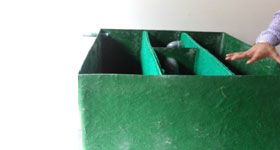- Chandigarh UT
- Creative Corner
- Dadra Nagar Haveli UT
- Daman and Diu U.T.
- Department of Administrative Reforms and Public Grievances
- Department of Biotechnology
- Department of Commerce
- Department of Consumer Affairs
- Department of Industrial Policy and Promotion (DIPP)
- Department of Posts
- Department of Science and Technology
- Department of Telecom
- Digital India
- Economic Affairs
- Ek Bharat Shreshtha Bharat
- Energy Conservation
- Expenditure Management Commission
- Food Security
- Gandhi@150
- Girl Child Education
- Government Advertisements
- Green India
- Incredible India!
- India Textiles
- Indian Railways
- Indian Space Research Organisation - ISRO
- Job Creation
- LiFE-21 Day Challenge
- Mann Ki Baat
- Manual Scavenging-Free India
- Ministry for Development of North Eastern Region
- Ministry of Agriculture and Farmers Welfare
- Ministry of Chemicals and Fertilizers
- Ministry of Civil Aviation
- Ministry of Coal
- Ministry of Corporate Affairs
- Ministry of Culture
- Ministry of Defence
- Ministry of Earth Sciences
- Ministry of Education
- Ministry of Electronics and Information Technology
- Ministry of Environment, Forest and Climate Change
- Ministry of External Affairs
- Ministry of Finance
- Ministry of Health and Family Welfare
- Ministry of Home Affairs
- Ministry of Housing and Urban Affairs
- Ministry of Information and Broadcasting
- Ministry of Jal Shakti
- Ministry of Law and Justice
- Ministry of Micro, Small and Medium Enterprises (MSME)
- Ministry of Petroleum and Natural Gas
- Ministry of Power
- Ministry of Social Justice and Empowerment
- Ministry of Statistics and Programme Implementation
- Ministry of Steel
- Ministry of Women and Child Development
- MyGov Move - Volunteer
- New Education Policy
- New India Championship
- NITI Aayog
- NRIs for India’s Growth
- Open Forum
- PM Live Events
- Revenue and GST
- Rural Development
- Saansad Adarsh Gram Yojana
- Sakriya Panchayat
- Skill Development
- Smart Cities
- Sporty India
- Swachh Bharat (Clean India)
- Tribal Development
- Watershed Management
- Youth for Nation-Building
Collate best practices in conversion of insanitary latrines into sanitary latrines in congested urban areas

Start Date :
Sep 13, 2014
Last Date :
Sep 29, 2014
18:30 PM IST (GMT +5.30 Hrs)
In congested lanes of urban areas, sometimes it is not possible to construct pits or septic tanks. Absence of sewer in such areas is a challenge in converting insanitary latrines ...
In congested lanes of urban areas, sometimes it is not possible to construct pits or septic tanks. Absence of sewer in such areas is a challenge in converting insanitary latrines into sanitary latrines. Very small houses in such areas leave little scope for construction of sanitary toilets. Alternative and innovative solutions are needed to tackle this problem.
This task expects the participants to collate the best practices in constructing sanitary toilets in such congested areas.


In congested areas toilets can be build using the technology followed in flights. Instead of flushing with water air can be used, that save water and less sewage.
UDDT in Burkina Faso
Urine diversion refers to the separation of human urine from feces at the point source, i.e. at the toilet fixture or outhouse. Separation of urine from feces allows human waste to be treated separately and used as a potential resource. Applications are typically found where connection to a sewer based sanitation system is not available or areas where water supplies are limited. A toilet used to facilitate the separation of human waste products is called a urine diversion
As temporary measure, we can create space, create septic tanks, etc., in urban congested areas to enhance sanitation quality, but if we have to create & maintain hygenic conditions on long term, we will require multi-pronged approach. Attached PDF discusses these points.
We need to build mobile toilet with payment systems and also proper maintenance and financial set up to maintain these toilet. Every urban area we need to find houses with out toilet and people given awareness about hygiene and cleaniless.
The Last one- Composting Toilets for small lands may be a possible solution for it
Rural Sanitation Method.
Sanitary latrines occupying very less space can be built in just a space of 1m*1m space, where a latrine can be built, a tank for water supply can be built on the roof of the toilet connected to the two taps. One tap would be at basin & the other for cleaning latrine, a bucket would be placed below the tap, the bucket can be attached to the wall by a wire or a rope so that it can't be taken away. A huge concrete pit can be constructed just below & an outlet must be outside to evacuate periodical
This the problem in old part of city like chauk area where the width of street is 4 to five feet. Where sewerege system can not be develop.these can be seen at a large system in varansi in the constituency of pm. In these street human excreta is being head leaded in open looks very inhumatrian.few design are available in iit roorkee.a team of roorkee shall be deployed with details survey and their disposal in varansi.my self being a civil engineer eager to give my service for this social work
Compositing toilets are suitable alternative.They work on the principle of aerobic decomposition.It is aspecial toilet designed to process waste into smaller harmless and non-offensive compost smells like garden soil.Human waste is 90% water.The primary goal of composting is evaporation of water which is done with the help of heating element/fan.Rest Solid part is store in a special drum inside the toilet.Solid waste is aerated and broken into smaller parts.
1.Identify those conjusted areas with insanitary toilets
2.Study the population and number of houses
3.Prepare an estimate of toilets reqiured
4.Allow PPP model in toilet constructions
5.Construct Composting toilets.